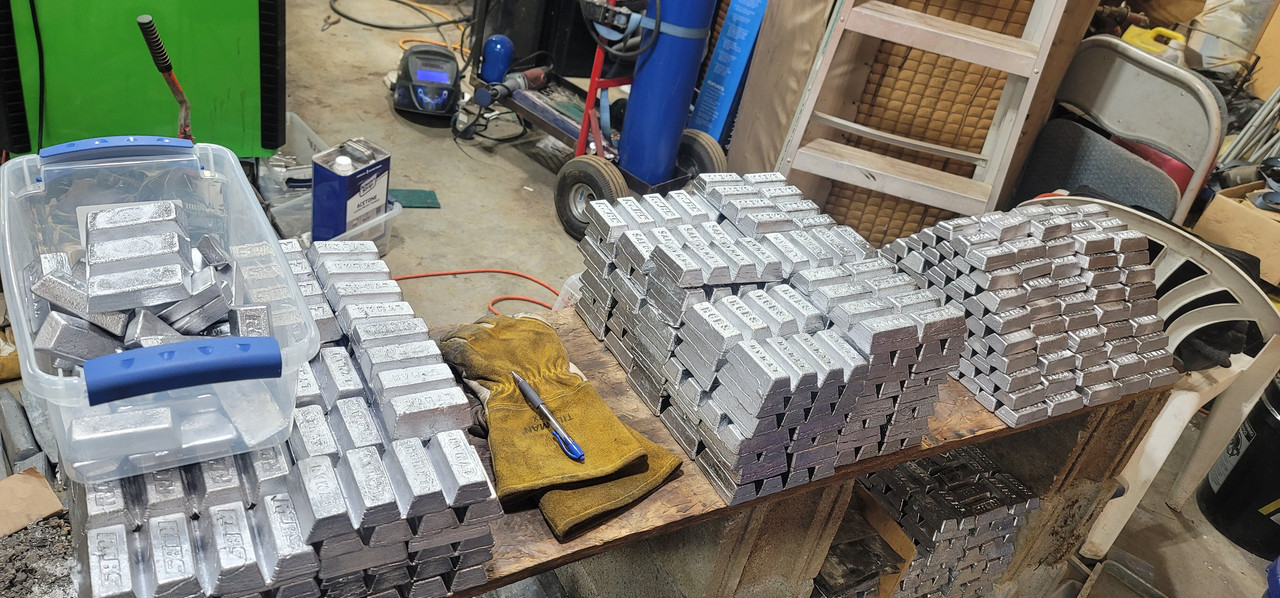You're right, I don't know a darn thing about lead, and I'm just talking out my hind end.

⁷
This is a pile of random scrap I had laying around filling benches and buckets just getting in the way. Everything from plumber's ingots to lines of letter type, and you name it in between.
All melted first individually to make sure there was no zinc contamination or other evil things in the unidentifiable stuff.
In all honesty, that's how I found zinc in some "boat keel" a couple years ago. Most of it though was in original form which I strive to find/use above all else.
Blended into 3 levels of hardness that are destined to be components in quite a large batch of 90/5/5. There is 1083 lbs there total.
I'm sure when I get the stuff tested I'll be adding quite a bit of 4.7 Bhn soft lead from underground municipal electrical transmission cable shielding (which I have hundreds upon hundreds of pounds of) to bring it down to what the calculator deems appropriate. I have around 300 lbs of high tin content tin/lead mix also should I need any of that.
I'll likely have around a ton of #2 when it's all said and done. Random scrap gathered cheap and free over the past couple years and needing something, anything, done with it, just for the sake of saving space.
Finding
GOOD lead, be it scrap or not, isn't as hard as some of you want to make it out to be. But, you can have all the sketchy boat keel you want, I won't fight you for a single ounce of it.













 Reply With Quote
Reply With Quote


 ⁷
⁷









